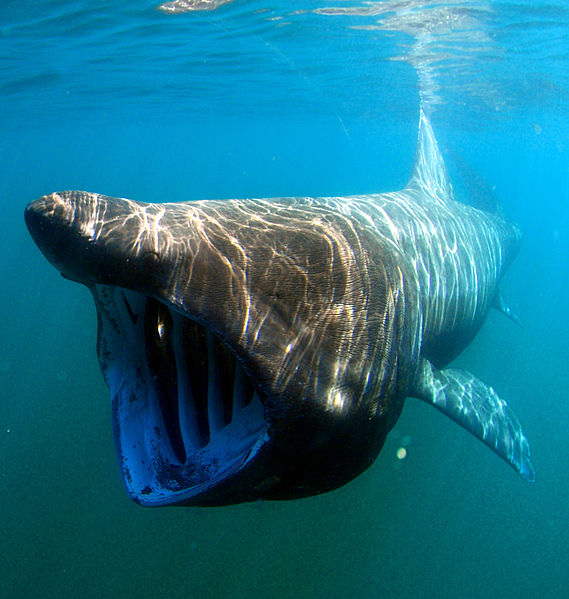We're open daily! View holiday hours
Science News
Tracking Basking Sharks
February 23, 2012
by Dave Ebert

Citizen scientists and researchers are working together to protect a charismatic species of sharks along the Pacific coast and into farther and deeper waters.
Our team is reporting this month on a basking shark (Cetorhinus maximus) tagged off the California coast in June 2011 that has turned up northeast of the Hawaiian Islands. The shark, which was first spotted and tagged with a pop-up satellite tag, traveled nearly 2500 miles over the past 8 months, making this the longest recorded movement of this shark species in the Pacific Ocean. In addition to the distance, the tag recorded data on the water temperature and the depth that the shark traveled. This information will be important in determining habitat preference and utilization for conservation purposes.
The IUCN lists the basking shark as vulnerable globally, but in the eastern North Pacific it is listed as endangered. In Canada, where its population has undergone significant historical declines, it is also listed as endangered. In April 2010, the U.S. listed the Pacific coast basking shark population as a “Species of Concern”.
The basking shark is the second largest (up to 30 feet or more!) shark species in the world and has a large range—from high latitude seas, including Arctic waters, to lower latitudes including the tropics. The distribution of these sharks changes seasonally with their abundance shifting from higher to lower latitudes in the autumn and winter months. As they move into warm temperate and tropical seas they exhibit subtropical submergence diving to cooler waters often several hundred meters below the surface. This explains why they are rarely, if ever, seen in the tropics.
Given the lack of knowledge of this species along the Pacific coast, a collaborative project was initiated in 2010 between the Pacific Shark Research Center (Moss Landing Marine Laboratories) and NOAA Fisheries Southwest Fisheries Science Center (La Jolla, CA) to investigate the abundance, distribution and population status of basking sharks. This is part of a tri-national program with Canadian and Mexican colleagues.
This multi-faceted project includes an educational and outreach component to raise public awareness and broaden the base of citizen scientists. Non-scientists report basking shark sightings and researchers are able to gain further knowledge on the occurrence and movements of these sharks. Over time, this will allow migration patterns to surface, and along the way, the public will gain knowledge and awareness about the ocean, its threats and the fascinating creatures that call it home.
(Do you want to join the cause? Find more information here.)
The citizen science and satellite tag data indicates that these sharks may use large expanses of the Pacific Ocean as critical habitat. This will allow researchers to assess potential sources of mortality outside the U.S., Canada and Mexico, as well as the impacts of human interactions and environmental effects on population trends. The information gathered is beginning to fill vital information gaps in order to develop a recovery plan that will maximize the potential to rebuild the basking shark population in the eastern North Pacific.
Image: Greg Skomal/SWFSC-NOAA
Dave Ebert, PhD, is the Director of the Pacific Shark Research Center and a research associate at the California Academy of Sciences.